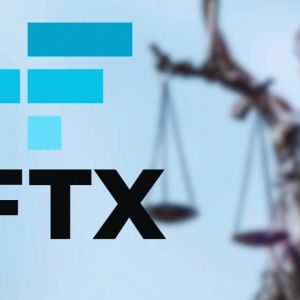Why It’s Not Too Late To Buy eToro
8 min read
Summary eToro’s IPO valued it at $4.2B, but strong crypto-driven revenue growth and favorable U.S. regulatory shifts could propel its market cap toward $10B. The platform’s unique social trading features and multi-asset offerings provide a competitive edge over peers like Robinhood, attracting both novice and sophisticated investors. Recent U.S. crypto regulation changes and eToro’s Nasdaq listing open significant growth opportunities in North America, despite some regulatory and competitive risks. While risks remain, eToro’s current valuation and business model suggest substantial upside potential compared to sector peers, making ETOR stock attractive. Israeli online trading company eToro Group Ltd ( ETOR ) went public last week on Wednesday, raising $310 million via an initial public offering. The IPO was priced at $52.00 per share, valuing the company at $4.2 billion. eToro shares opened trading on Nasdaq at $69.69 per share, 34% above the IPO price. Even though the stock price has pulled back slightly to about $66.00 per share, the company is still valued about 27% above its IPO valuation. It is also significantly higher than the $3.5 billion the online brokerage platform reported in the $300 million venture funding announced in 2023. However, at the current market cap of about $5.4 billion, eToro’s current market value is just above half the $10.4 billion valuation the company sought when it first planned to go public via a SPAC in 2021. eToro’s value proposition eToro’s 2024 total commission income rose 45.6% last year to $931 million, according to the company’s pre-IPO filings. The fourth quarter brought in $303 million, mainly driven the Bitcoin’s rise to $100,000 following Trump’s election. Overall, crypto-related commissions accounted for 38% of the total for the year, again with the fourth quarter a major contributor. This is even though eToro had agreed to delist multiple cryptocurrencies from its trading platform in September, following its settlement with the SEC. However, things have taken a turn for the better in the U.S. overall, with the securities regulatory agency seemingly retreating on oversight after withdrawing or pausing cases against Coinbase, Kraken, and Robinhood’s crypto unit. Earlier this year, the Trump administration reclassified several digital asset types as collectibles rather than securities, paving the way for a potential relisting on crypto exchanges and other trading platforms in the U.S., where they had been previously delisted amid the SEC’s wrath on crypto companies. Although bitcoin is by far the biggest contributor to daily crypto trading volume, listing products like meme coins can help attract new traders to a platform, thus potentially increasing commission revenue. Reuters reported that eToro CEO, Yoni Assia, shares the sentiment that “speculation on meme coins generally brings more people into the market.” If U.S. traders are able to trade more tokens than the three that are currently allowed on eToro, it creates an avenue for more people to begin using the platform. This, in turn, translates to higher commission revenue. The current shift in the U.S. crypto regulatory environment, coupled with eToro’s public listing, will also likely draw more institutional investors to the platform. eToro established itself as one of the leading retail trading platforms before expanding to crypto assets in 2013. More recently, the company expanded its digital assets offerings to include “experimental crypto assets”, which it described as a class of digital assets that include meme coins, initial coin offerings and token sales, innovative products, and decentralized finance ((DEFI)) strategies. Memecoins played a big part in the Solana blockchain’s rapid growth over the past two years, helping it recover from the impact of the FTX collapse. Their role in eToro’s growth might be different, but like Assia said, they could still onboard more traders to the market. eToro’s value proposition eToro has established itself as a leading social trading platform, driven by the community. Although a majority of its 3.5 million funded accounts are in Europe and the UK, its listing on the Nasdaq opens up an opportunity to fully grow its footprint in North America. The eToro social trading platform also offers more features than most of its publicly listed competitors, including the ability to follow and copy the trades of expert traders. Tzahi Kanza, CEO of Syndika , a Web3 venture studio and a founders syndicate, also believes eToro has positioned itself strategically at the intersection of retail investing, social trading, and cryptocurrency access. “Unlike traditional brokers, eToro integrates a social feed where users can copy the strategies of top-performing investors, blending education with execution,” Kanza said in a May 16 Q&A interview emailed to me exclusively for this Seeking Alpha article. “Moreover, eToro offers direct exposure to crypto assets alongside equities, ETFs, and commodities, making it one of the few platforms where retail users can build a multi-asset portfolio with a Web3 edge.” For this reason, Kanza also believes eToro’s model is difficult to replicate at scale. Its approach to crypto is now being mirrored by multi-billion dollar companies like Robinhood Markets ( HOOD ), which has rapidly expanded its asset offerings to include cryptocurrencies. This approach — of traditional banks and neobanks/fintech companies integrating crypto services, is gaining traction within the crypto community at a faster rate than when native crypto companies try to integrate traditional financial services. This is primarily because of the strong foundations that mainstream finance companies are built on traditionally, and Hong Yea, co-founder and CEO of GRVT , a licensed on-chain exchange, thinks this could be yet another strong value proposition for eToro, especially now it has gone public. On May 16, in an emailed Q&A interview exclusive for this Seeking Alpha article, Yea said, “As a non-crypto native, Gen Z-focused brand that has progressively and intuitively moved deeper into the crypto ecosystem, eToro has precisely caught the wave of the recent on-chain finance narrative, which is gaining huge momentum, making its IPO particularly attractive.” However, Yeo thinks it is still too early to predict whether or not eToro will become one of the main crypto trading companies, offering caution about what happened in the dot-com bubble. “Many companies went public with IPOs [in the dot-com bubble] only to burst afterwards,” Yea added. However, Syndika’s Tzahi Kanza offers a different perspective, one that I happen to share. Last year, crypto became eToro’s biggest revenue contributor with 38% of the total commissions. eToro’s top line has been on a steady rise over the past three years, increasing to $639 million in 2023, up from $632 million in 2022, before spiking to $931 million last year. This is still below the company’s $1.23 billion revenue reported in 2021 at the height of the previous crypto boom, which makes a realistic target for 2025 if the current crypto rally continues. Kanza believes the growing impact of crypto on eToro’s revenue is more structural than a one-time anomaly caused by the massive surge in crypto trading activity in the final quarter of the year. “With the cryptocurrency sector expected to outperform other asset classes, I believe its contribution to eToro’s revenue will continue to grow. While competition from pure crypto exchanges will remain intense, many of them lack the multi-asset exposure, social trading layer, and compliance credentials that eToro offers,” Kanza said. If eToro’s revenue can hit the 2021 highs this year, that implies a 32% growth. This could be a catalyst for an ETOR price rally, potentially pushing it closer to $90 per share. The stock has already traded above $74 per share since going public last week, again, which means a high $80s valuation is not beyond the realms of reality. As of December 31, 2021, when eToro reported annual revenue of $1.23 billion, the company had 2.4 million funded accounts. The latest filings say it has 3.5 million funded accounts, which is about 45.8% more. The company’s assets under administration are also up significantly, rising to $16.6 billion ($12.15 billion crypto), up from $10.7 billion in 2021, approximately 55.7% growth. This again supports the case for higher revenues if trader activity hits 2021 highs. If the current crypto boom generates a similar trading activity in 2021, the 55.7% increase in assets under administration should be able to boost revenue further to about $1.9 billion. That’s more than 100% growth potential in top-line overall, which, based on the current ETOR stock valuation of about $5.4 billion on revenue of $931 million, would make a $10.8 billion eToro market cap realistic. eToro’s closest publicly listed peer is Robinhood Markets, which saw its revenue increase by 58% (YoY) to $2.95 billion in 2024. Based on Robinhood’s current valuation of $57.28 billion, the company’s market cap is more than 10x eToro’s $5.4 billion, yet its 2024 revenue is about 3x eToro’s. That leaves a lot of room for the eToro stock price to catch up, thus making a $10 billion market cap realistically achievable. Risks eToro’s revenue last year was hugely impacted by the late surge in crypto trading activity, which was driven by Trump’s election and the hopes that the 45th and 47th President of the United States would usher in a better market for digital assets companies in the U.S. Since then, Trump has appointed a leadership team, widely viewed as ‘crypto-centric’. However, that team, starting with the new SEC chair Paul Atkins, is already being questioned about questionable crypto projects (the TRUMP meme coin) and ties to certain crypto people (Tron blockchain’s Justin Sun). The Crypto and AI task force will have to stand firm and implement Trump’s digital assets vision for the companies trooping into the U.S. crypto market to enjoy success. Furthermore, while the likes of Robinhood, Kraken, and Coinbase have had the SEC withdraw or pause its lawsuits against them, it remains to be seen whether there will be retrospective applications to companies whose cases had already been settled with the securities regulator. Will U.S. traders be allowed to trade more tokens in eToro? Also, unlike Robinhood, which is headquartered in the U.S., it remains to be seen whether eToro will be able to wrestle a significant chunk of the U.S. crypto trading market as a foreign company, even if it is eventually allowed to list more cryptocurrencies. Conclusion eToro’s social trading platform offers a unique approach to crypto trading, enabling even new traders to easily start trading without worrying about the technical terminologies that confuse most novices. Its public listing gives it the aura that comes with companies whose books are routinely scrutinized by regulators, making it a safer place for the risk-averse. It also provides a clearer path to expanding its North American footprint, which will be further boosted by the recent shift to crypto regulation in the U.S. Moreover, while there are genuine potential hurdles that could still mitigate eToro’s growth prospects, its current valuation relative to its closest peer based on last year’s revenues suggests there is still room for the ETOR price to go higher.

Source: Seeking Alpha



